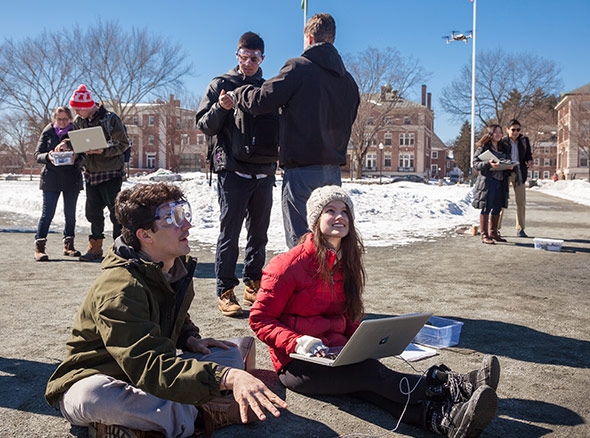Strange little machines were seen flying above the Green on March 6. The airborne contraptions were in fact Andrew Campbell’s “nanocopters,” the culminating project in his “Computer Science 50 Software Design and Implementation” class.

“In previous years we programmed and raced robots, but because our numbers in computer science classes are way up, I had to find a new project suitable for a larger class,” says Campbell, a professor of computer science.
“This is an extremely cool project,” he says. “Students control these tiny wireless flying devices using only hand gestures. With a swipe of the hand, the nanocopter is launched into the air.”
Read more:
Campbell says the magic comes from a new motion-sensing device called Leap Motion, which the students program to understand specific hand gestures. The two project components are the Leap Motion and the wireless nanocopter. “The students program both devices and deal with real-time control issues, like what should the program do when the copter is about to hit a wall,” he says.
The students—two to a team—programmed the complete system in 10 days and flew 30 nanocopters on the Green, all using hands-free control.
“We decided on the Green because we want everyone to know that programming and computer science are way cool here at Dartmouth,” Campbell says. “I wanted to expose the students to cutting-edge challenges and the new revolution in how we will interact with computing devices in the future—through speech and gesture.”
Campbell says they somehow lost one copter on the Green that day. “It flew to a high of 80 feet or so and looked like it disappeared into the sun. We mused that some kid will find a tiny device when the snow melts and wonder what it could be.”